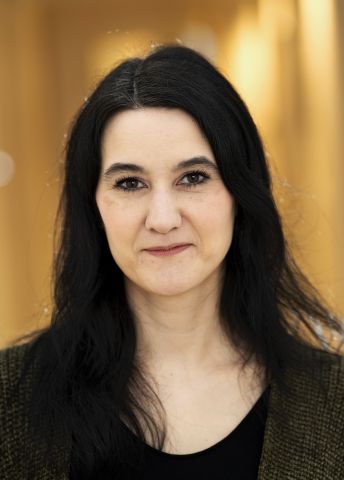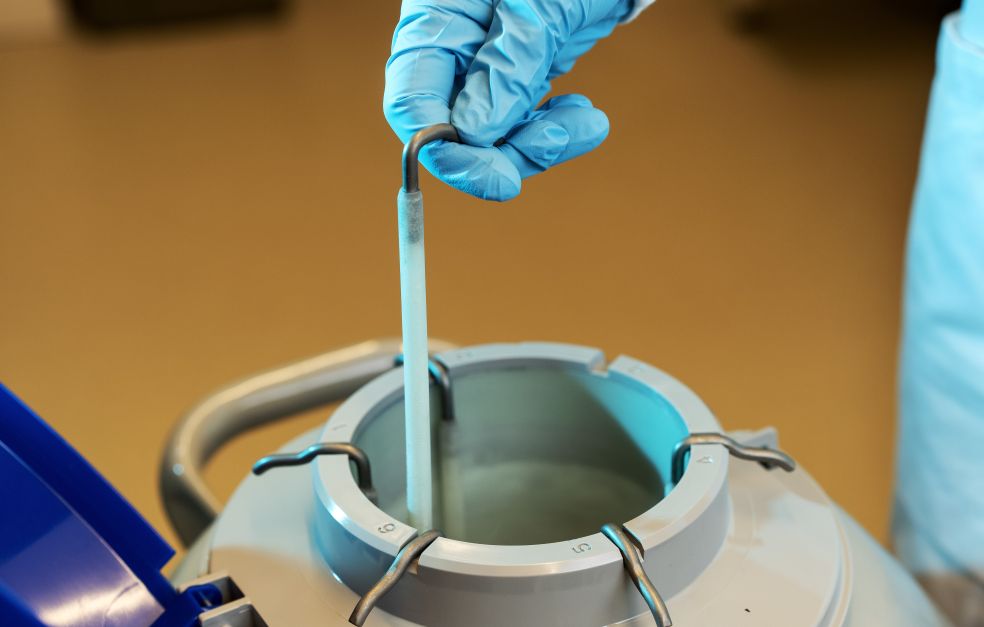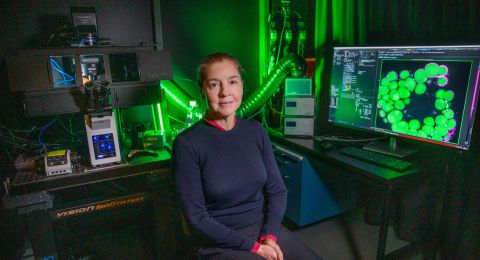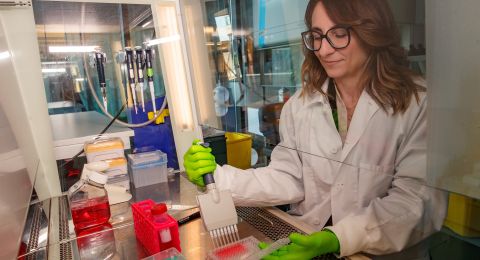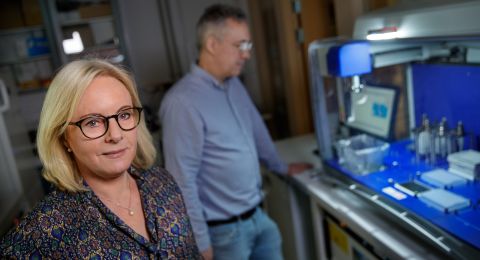Melatonin is a “sleep hormone” that impacts our circadian rhythm. Researcher Linda Johansson is examining the role it plays in the body at cellular level, including its links to type 2 diabetes. Her findings may ultimately pave the way for entirely new types of therapeutics.
Linda Johansson
PhD, Biomedicine
Wallenberg Academy Fellow 2021
Institution:
University of Gothenburg
Research field:
Medical structural biology, including determination of the structure and function of melatonin receptors using advanced cryo electron microscopy
After several years as a researcher in the U.S., Johansson has returned to the University of Gothenburg. There she has chosen to focus her research on the way that melatonin impacts the body at cellular level.
Melatonin is a hormone secreted by the brain, helping to regulate our circadian rhythms. Concentrations of melatonin are affected by light, and are normally highest during the hours of darkness. But circadian rhythms can be disrupted by our lifestyle.
“One example often mentioned is shift work, but also the fact that many people no longer work in daylight or spend time out in the sunshine.”
Use of mobile phones and other screens also affects the way we are exposed to light, with potentially adverse impacts on sleep. Poor sleep quality can in turn be a risk factor for diseases such as type 2 diabetes.
Type 2 diabetes is a growing problem across the world, with a broad impact on public health. Diabetes is often associated with an unhealthy lifestyle linked to smoking, unhealthy food, sedentary habits and poor sleep, for example. But this is not the whole story, as Johansson explains:
“There is a stigma attached to type 2 diabetes, i.e. that it is a person’s own fault if they have an unhealthy lifestyle. But it’s not that simple. Type 2 diabetes is a multifaceted disease that also involves underlying genetic factors.”
We hope our research will create a platform for developing better drugs that bind more selectively to the right target, with fewer side-effects.
Genetic factors
More research into those genetic factors is needed. Johansson is studying a link between type 2 diabetes and melatonin. Recent studies have shown that people with mutations in their body’s receptors for melatonin are more likely to develop type 2 diabetes than those without these genetic changes. It is therefore of great interest to explore this mechanism in as much detail as possible.
“We hope our research will lead to a better understanding of how receptors for melatonin are involved in the onset and progress of type 2 diabetes.”
Melatonin receptors are found on the surface of cells. There are two variants in humans. A few years ago Johansson managed to produce high-resolution images of the individual receptors with the help of X-ray crystallography. The method involves the use of nanocrystals containing the receptors to be imaged.
The three-dimensional structures enabled her to show how existing drugs used to treat sleep disorders and insomnia bind to the receptors. New drug candidates could also be identified.
She has now reached the next stage. The two receptors tend to “talk” to one another, and can form a complex in the cell membrane. The idea is to study the structure and function of that complex. The interaction between the receptors has a major impact in the cell, as Johansson explains:
“The complex acquires completely different properties and effects as compared with when the receptors act alone. We know that by joining forces they activate alternate signaling pathways, which trigger different responses in the cell.”
The project includes finding out more about the above genetic changes linked to type 2 diabetes. One question is how the occurrence of such mutations impacts signaling, and hence also how the sleep hormone is activated. Her findings may provide new knowledge about the link between type 2 diabetes and melatonin.
“I can carry out these studies thanks to my Wallenberg Academy Fellow grant, which is hugely important because it enables us to adopt a broader approach and have the courage to break new ground.”
Elusive receptors
But the receptors are elusive. The complex has a tendency to move and change shape. It can shift between different positions, which is also part of its function. Its shifting character poses a great challenge to researchers attempting to determine its structure. Method development is therefore a key component of the research.
The technology they are using is called cryo electron microscopy, which is capable of ultrahigh resolution images of the complex at atomic level.
“We’ve developed a method for studying the complex in the membrane in living cells, and we can also isolate the complex in order to make structural studies. The structures we identify haven’t been produced by anyone before, and we really have to learn as we go along. There’s nothing we can copy.”
New drugs
The findings may pave the way for a completely new kind of drug research focusing on receptor complexes instead of individual receptors. These results may lead to new therapeutics for sleep difficulties and later on possibly also type 2 diabetes.
“We hope our research will create a platform for developing better drugs that bind more selectively to the right target, with fewer side-effects.”
In school Johansson already had her sights set on a research career. During her career she has moved from the natural science faculty to medicine, a change of scene she finds rewarding.
“I look forward to going to work every day. And I think it’s so rewarding to do research that is of real benefit to people. But I have also seen many potential synergies between science and medicine that I’m keen to help develop.”
Text Nils Johan Tjärnlund
Translation Maxwell Arding
Photo Johan Wingborg
